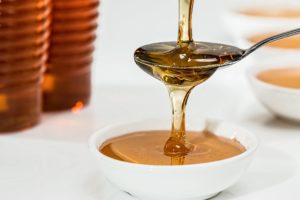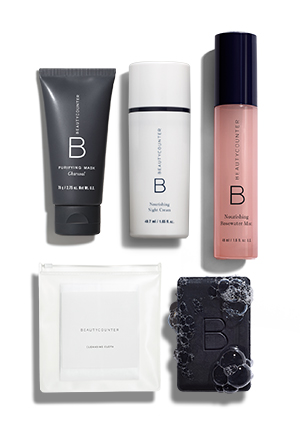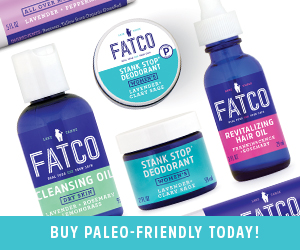23 August, 2013
How Sweet It Is: All Things Sweeteners

More and more people these days are looking for alternative sweeteners to white sugar. Most people know by now that white sugar is not a quality ingredient to include in their diet and are looking for replacements to the white stuff. Today we are going to look at all the different type of sweeteners available and which ones are the best.
Sugar in any form really should be limited (unless it is in the form of fruit). Sugar does add calories that need to be burned otherwise it can be turned into fat, even if it is a healthier version. The term “healthy sugar” really just means that the sugar is as close to what nature created as possible and minimal nutrients have been lost.
Sugar Substitutes (Splenda, NutraSweet, Equal, Sweet N Low, Truvia, Pure Via, Sun Crystals, Sweet Twim, NectaSweet, Sunett, and Sweet One)- I used to be a fan of Splenda and used it for everything. This was one of the first things I stopped using when I decided to live an organic unprocessed lifestyle. Sugar Substitutes are far from unprocessed. Splenda is sugar that has gone through a complex chemical process that involves chlorine and phosgene gas. All artificial sweeteners are chemically made or processed. Animal studies have convincingly suggested that artificial sweeteners cause weight gain, brain tumors, bladder cancer and many other health hazards. Some other countries have even banned some artificial sweeteners that are still approved for use in the US.
Brown Sugar– Brown sugar is basically refined white sugar with molasses added back into it. Brown sugar is not much better than white sugar and is still highly processed.
Turbinado Sugar (Raw Sugar)– Turbinado sugar is made by pressing the sugar cane plant to extract its juice. The juice is then heated until it forms crystals which are spun to remove water and form large, light brown sugar crystals. Some believe this sugar is a better choice because it is less processed however raw sugar does undergo some processing and loses about 2/3 of its molasses content. It does contain trace amounts of minerals but offers no real health advantages over granulated sugar. Raw sugar even affects your blood sugar in much the same way as regular, white sugar.
Sucanat (Evaporated Cane Juice or Rapadura)– This is sugar produced directly from milled cane. The filtered, clarified juice is heated to remove water and then allowed to cool which forms granular crystals. Some believe that Sucanat is still too processed to be a healthy sugar. I personally think that this sugar is still a step up from other sugars so if it is all you can find then it is a good choice as the nutrient content is still higher than other processed sweeteners.
Coconut Palm Sugar– Coconut sugar is made from the sap of the sago and coconut palms which is dried and crystallized. Coconut sugar doesn’t increase your blood sugar harshly so you don’t have highs and lows. This is because it has a naturally low glycemic index (GI)- a measure of how food impacts blood sugar. Coconut sugar does contain minerals, some short chain fatty acids, and antioxidants which may provide some health benefits. This is my preferred sugar when I need a dry sweetener for baking.
Corn Syrup– This is syrup that is converted from cornstarch into high fructose corn syrup (HFCS). HFCS is made through a highly industrialized, chemical fermentation and distillation process that uses tremendous amounts of energy to produce. Corn syrup is very concerning due to the level of genetic modification (GMO), environmental pollution and toxic processing that is used when creating it. Remember corn is one of the top GMO crops.
Agave Nectar or Syrup– Agave syrup is very high in fructose. This is one reason why it has become so popular. It is often advertised as a syrup that is low on the Glycemic Index (GI) scale (or low in glucose). Of course it is low on the GI scale because it is mostly composed of fructose. Nowhere is nature does this high ratio of fructose occur naturally. It even contains more fructose than corn syrup or refined table sugar. Agave can be heavily process with heat and chemicals or minimally processed with enzymes. Either way it requires an industrial process to extract its sweetness and is factory-made. During this process agave losses a lot of the enzymes and nutrients that it started with. Agave is not a good choice.
Yacon Syrup– Yacon syrup is derived from the roots of the yacon plant. This syrup is usually made with minimal processing in an evaporator. Yacon is a low glycemic syrup and even acts as a prebiotic which can be benefital for digestion. Yacon can be using in any recipe calling for maple syrup or molasses but is pretty pricey.
Rice Syrup– Rice syrup is a natural sweetener that is made from cooked brown rice which is specially fermented to turn the starches in the rice into sugars.
Molasses– Molasses is a byproduct of processing cane or beet sugar. Because of this reason (beet sugar is one of the top genetically modified foods) I always recommend buying organic molasses. Molasses has somewhat more nutritional value than does white or brown sugar. The process of extraction and treatment with sulfur results in adding iron, calcium and magnesium. If it is extracted from sugar grown in well fertilized soils the mineral content can be greater. I do not use molasses often but it can be great for some recipes.
Maple Syrup– Pure maple syrup is the only way to go. Maple syrup is obtained through tapping of old trees. Once the syrup is tapped it is then boiled to evaporate water that is present which creates the syrup. Real maple syrup is rich in trace minerals that comes from the ground through the tree’s roots. Commercial maple syrup can contain formaldehyde. Coombs Vermont Gourmet is a good organic, non-formaldehyde maple syrup. Please NEVER EVER buy a syrup like Aunt Jemima. These syrups are fake. Here is the ingredient list: CORN SYRUP, HIGH FRUCTOSE CORN SYRUP, WATER, CELLULOSE GUM, CARAMEL COLOR, SALT, SODIUM BENZOATE AND SORBIC ACID (PRESERVATIVES), ARTIFICIAL AND NATURAL FLAVORS, SODIUM HEXAMETAPHOSPHATE.
Honey– Honey contains trace amounts of several vitamins and minerals. The specific ones and amounts present depend of the flowers that the bees visited. If those flowers are heavily sprayed with pesticides then those chemicals will be in the honey too. Pasteurized honey has been heated and can destroy vitamins and enzymes. Raw honey is honey as it exists in the beehive but honey can also be labeled raw even if it has been “minimally processed.” Please read your honey labels to make sure you are not purchasing flavored and colored corn syrup.
If you are looking for additional sugar free sweetener options you can use things like applesauce, mashed ripe bananas, or dates to sweeten a dish. Even when I am baking I love to use fruit and my sweetener whenever possible like with my Chunky Monkey Cookies or my Berry Banana Cream Pie.











Thanks for this informative review.
I think one thing people are often surprised to learn about with agave nectar is that the liver’s metabolic breakdown of the high fructose concentration can also increase triglyceride levels.
What is your opinion on monk fruit sweetener?
I think just like with stevia much of what you can find in the store is very processed. Truely unprocessed stevia is actually green not white. I bet it goes through quite a process before going in those packages. The closer to nature the better.